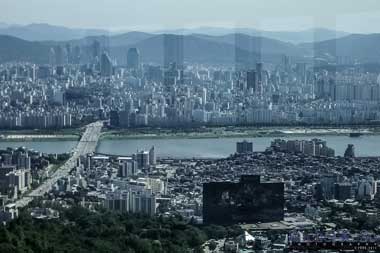If you want to make the most of your visit to South Korea, then it is worth boning up on the various modes of transportation available to you in the country. It's a large country with several big cities so, if you are planning on moving around, you will need some information to guide you. Here we look at the most crucial aspects of getting around in South Korea.
Flying in South Korea
The South Korean airline industry is a busy one, with more than ten major local airlines all offering domestic flights. In fact, flights between cities are so common in South Korea that it is estimated a plane takes off on the busiest air route in the country, that between Jeju Island and Seoul Gimpo, every thirty minutes. Though you would think this makes life easy for the airline customer, unfortunately this is not the case. Finding and booking the right flight for you can be tricky, as no websites will show all the available flights you can take. This means shopping around is essential if you want the cheapest ticket or the best flight time.
Price-wise, the tickets will vary massively between the low cost companies (Jeju Air, Air Busan, Easter Jet and Jin Air) and the big name airlines (Asiana, Korea Air Lines). For the former, expect a tiny baggage allowance and a minimum of frills. For the latter, you can expect full service. If you want to book a domestic flight in South Korea before you arrive in the country, you will require a credit card with an ‘approved by Visa' accreditation.
Taking the train
Unlike intercity flights, a Korean rail journey can be booked from overseas without a specific card. However, you can only book routes 30 days before travelling. Again, the Korail website can be a little tricky to navigate and it takes a long search to be sure you definitely are getting the best possible deal. Seating is generally allocated to each ticket holder.
Driving and renting a car
If you are moving around quite a bit in South Korea, it is quite possible that renting a car will be the most cost effective and comfortable way to do it. Generally speaking, the prices are very competitive, particularly when compared with the west, and South Korean roads are quite safe. The two main companies offering car rental services are AJ and KTKumho. These two run a large network of rental shops all over the nation. Once again, however, you should be warned: booking through their websites can be a bit of a struggle. If you are travelling to a major airport like Jeju, it might be best to sort out your rental upon arrival.
In order to drive legally in South Korea you will need an International Driver's Permit, but helpfully all road signs are printed in both Korean and English. You will also notice, pretty quickly, just how much CCTV is in place on Korean roads. That means careful driving is essential.

